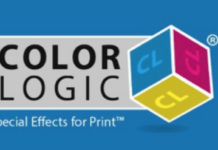McDonald’s restaurants in the U.K. have been testing and expanding the use of customer-facing digital signage solutions, with hundreds of locations already deployed, according to a recent case study from digital signage provider ComQi.
With the quick-service restaurant giant looking for new ways to increase foot traffic, communicate broader menu options and boost average customer spends, hundreds of U.K. McDonald’s locations are using digital signage guided by the Linney Group and using ComQi’s cloud-based EnGage digital content and campaign management platform. Based on clearly identified positive sales impacts, the digital signage pilot continues to grow in scope, the companies said.
The McDonald’s U.K. digital signage displays have been shown to lift sales by as much as 11 percent on some items, and have helped increase average transaction amounts, according to the case study.
Looking for ways to increase foot traffic and average customer spends, and dealing with a diverse range of new menu options, McDonald’s U.K. began looking at digital signage, particularly after noticing the uptake in the technology’s use in retail and by their food service competitors, the case study said.
To increase footfall in stores, the chain started testing digital signage window displays along selected high-traffic streets, working with The Linney Group, a multidisciplinary marketing firm also based in the U.K.
Six stores were equipped with a special translucent film appliqué on store windows; the appliqué provided a display surface for video projectors mounted inside the stores. The projection system made full-motion messaging appear on store windows to passersby.
While foot traffic and sales figures both suggested the projection setup was recouping its Cap-ex costs, the overall results weren’t significant enough to convince McDonald’s to sign off on the cost of expanding beyond the pilot sites.
The same year, McDonald’s U.K. looked at digital signage options for behind the counter, particularly its horizontal rows of menu displays. With a larger, increasingly diverse menu, the chain saw digital menu boards as a way to increase promotions of premium, higher-margin items without adding more static signage.
Working with Linney, McDonald’s selected the ComQi digital signage content management system and a rugged player PC for a technical trial in two stores.
The trial was used to assess whether media player PCs and displays could operate successfully in the harsh environment of a quick-service restaurant: to evaluate the aesthetics of a digital display nested with traditional translite menus, and to test whether content could be effectively distributed and managed from a remote office.
With the first two sites running successfully, the pilot programme was expanded to 20 sites, then broadened to 43 stores and focused heavily on a full sales analysis of the impact of screens in those stores, including total sales, average check sizes and product sales mix.
Data coming back from the field suggested the digital displays had a distinctly positive impact on sales figures. The testing was done against a set of control sites with similar size, footfall, customer profile and sales figures, to get a clean read on the impact of digital in the stores, the case study said. The results indicated that content on screen positively affected purchase patterns.
One-to-one intercept surveys done at six locations also measured consumer attitudes and perceptions of the displays. Surprisingly, while the response to the rotating messaging was positive, when customers were asked what they thought of the new displays, most hadn’t even noticed they were digital, according to the study.
‘It looks right with the new decor in here, a bit more modern and a bit continental,’ one interviewed customer was quoted as saying in the case study. ‘It makes me think that they are putting more effort into the food, as well. Approximately 200 stores have now deployed digital signage powered by the ComQi EnGage platform, with plans to double that number as more franchisees opt in to the program managed by Linney, the case study said.’
As a digital signage partner, ComQi took a thorough and exacting approach from the start, Dan Outram of the Linney Group said in the case study.
‘ComQi had considered every element of the chain, from the obvious hardware and software through to the critically important operational issues such as IT, power supply, support and maintenance, etc.,’ Outram said in the case study. “ComQi also offered us a solution whereby we had one sole partner to manage our activity but clear visibility over costs.’















